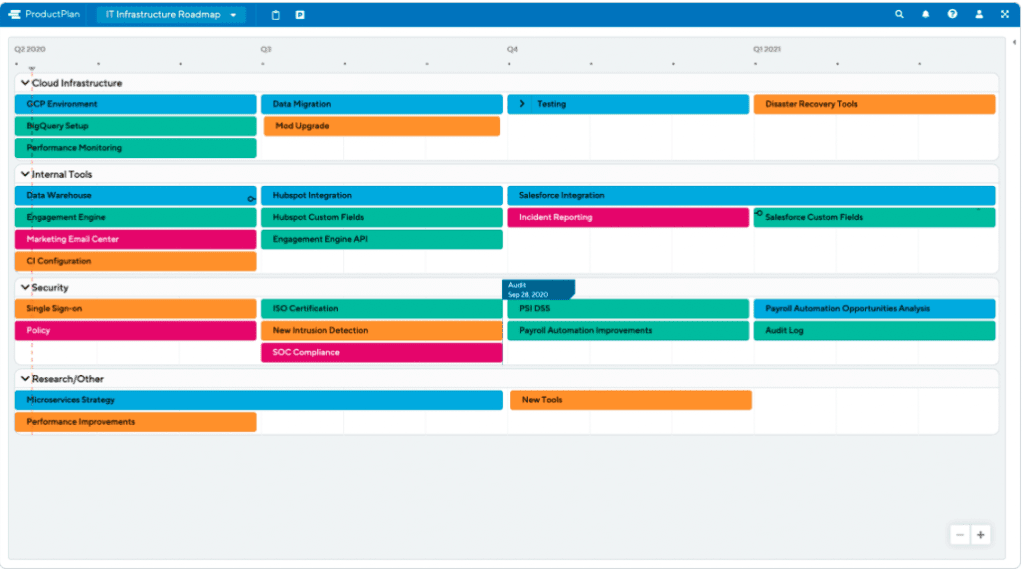The great thing about using software in a business setting is that there’s almost nothing you can’t accomplish with enough time and effort.
That’s also the downside to using software in a business setting. Because you can do just about anything, you become buried in all the possibilities. This is a problem that companies amid digital transformations often run into. There are so many business processes you could apply digital technologies to it’s often difficult to know where to begin.
Then again, just because you can do something doesn’t mean you should. Fortunately, there are some tools you can use to help you focus on the processes that you should include in your digital transformation – those processes that provide benefits to your customers. One of those tools is the jobs-to-be-done framework.
Let’s look at how you can use the jobs-to-be-done framework to focus your digital transformation efforts in the right direction.
What is digital transformation and why is it important?
An organization undergoes a digital transformation when it applies digital technologies to change, improve, enhance, and replace existing business processes.
Organizations perform digital transformations to improve customer experience and increase process efficiency. When you change how customers interact with your business and your products, you can improve your ability to serve them.
Furthermore, digital technologies allow customers to handle more of the interaction with your company themselves. As a result, you’re able to support more customers with the same or fewer staff.
Companies have been undergoing digital transformations for the past few years, and they don’t look like they’re going to slow down soon.
Initially, organizations started tackling digital transformations to make their processes more efficient and to improve their interactions with customers.
The pandemic of 2020 made digital transformations even more necessary. Organizations needed to find new ways to do business when their employees and customers could not interact face to face.
Once lockdowns subsided, organizations faced staff shortages, especially in the roles that had direct interaction with customers. The results of digital transformations provided a way to address those challenges.
Now, organizations face an uncertain economic landscape where there’s always the chance of a slowdown in business. They now turn to digital transformations to help them make their processes more efficient, and do more with less.
In order for a digital transformation to deliver on its twin promises of improved customer experience and increased efficiency, approach changes in the right way.
It’s important to resist the temptation to just build whatever your customers ask for. Instead, you need to truly understand what they’re trying to accomplish. Then you need to provide a solution that help them accomplish that goal with the most efficient processes possible. The jobs-to-be-done framework provides a playbook for uncovering your customers goal without blindly delivering a bunch of extraneous features.
What is the Jobs to be Done Framework
The jobs-to-be-done framework (JTBD) is an approach to developing products based on understanding both your customer’s specific goal, or “job,” and the thought processes that lead your customer to “hire” your product to complete the job.
JTBD helps you discover what customers are trying to accomplish when they buy your product. You can use that knowledge to make informed decisions about what changes to make to your product during your digital transformation efforts.
The JTBD approach to discovery
The JTBD approach to discovery involves digging into your customer’s actual experiences rather than asking them to guess what they may do in hypothetical situations. You don’t ask them what they want. You ask them what they do in order to figure out what they’re trying to accomplish.
Here are five key points when following a JTBD approach to discovery:
Be clear on why you’re doing discovery. You need to be clear about the reason for discovery so that you focus on the right scenarios. Teresa Torres refers to this as having a clearly defined research question. She suggests you have research questions, “which is what you’re trying to learn” and interview questions which are “what you’re going to ask to learn that.”
Have a clear idea of who you’re going to talk to. If your product is already in the hands of customers, talk to a few current customers, some past customers and a couple potential customers. If you haven’t released your product yet, identify the defining characteristics of the people you will serve so that you gather information from the right people. This is where personas complement a JTBD approach.
Ask people to tell stories about what they have done. Use interviews to research your customer’s behavior. Ask them to tell you stories to find out what they currently use to solve a specific problem and what issues they run into with their customer experience. You want to understand the products that they currently “hire” or “fire” to accomplish their job and why. Use these interviews to get an insight into your customer’s mindset and decision process related to your product.
Find out what caused them to change how they were solving a problem. You also want to find out their motivation for changing a solution. What people want to accomplish stays pretty consistent. How they try to accomplish it changes as they identify new solutions. Knowing what caused them to change to a different solution will give you some hints at what you may need to incorporate into your product.
Make note of what language they used to describe their scenarios. You can use the words they used to describe their problem and current solutions in your marketing messages to help people realize how your product helps them solve their problem.
How JTBD aids decision making
Because jobs stay stable over time, understanding the job your customers are trying to get done is a good way to describe value. You can then use that understanding of value to decide which processes to include in their digital transformation efforts. These process changes often result in new or updated products.
To get an idea of how JTBD helps people decide about their products we talked to some people who have used jobs-to-be-done approaches in digital transformations.
Tim Doman, CEO of Top Mobile Banks, found that JTBD helped insurance and financial services companies “design solutions that satisfy their requirements and produce a more effective and customer-centric transformation by comprehending the underlying jobs that customers are trying to complete.”
He pointed to some specific uses of JTBD by insurance and finance companies:
Insurance companies can provide policies that specifically address those needs by being aware of the tasks that customers are trying to complete when buying insurance, such as safeguarding their family or assets. Higher client retention and satisfaction rates and higher sales for the business may result from this.
Finance companies can create user-friendly apps and platforms that offer helpful insights by understanding the tasks that customers are trying to complete when managing their finances, such as monitoring expenditures or saving for retirement. Customers may become more engaged and devoted, and financial results may improve.
Kris Nicolaou, founder and strategist at Brain Box Labs, said that Brain Box Labs used JTBD to create “useful and user-friendly apps and websites. We communicate with our clients regarding their needs and create apps and websites that aid their digital transformation efforts.” Kris noted that Brain Box Labs used JTBD in their own operations as well, “especially in improving existing workflows. We now have a unique suite of tools geared towards efficiency, especially as we juggle multiple projects at once.”
Doug Haden, Vice President of Customer Support at IPVanish, used JTBD to “advance our customer support processes ahead of our competitors. At IPVanish, we recognize the importance of secure internet browsing for our customers, so we provide them with round-the-clock live help. We offer 24/7 customer service, which involves engaging our clients through email, chat, and social media.”
Conclusion
When you use JTBD, you’re not asking customers what they want, but you understand what they want to accomplish. You don’t become a feature factory, building every feature customers request. Rather, you use those requests to identify the best processes to include in your digital transformation efforts.
It starts with validating those customer requests then digging deeper to understand the underlying problem they’re trying to solve. Then you can deliver the minimal solution that helps them accomplish that.
When you solve your customers’ problems with a minimal solution that works, you’ll have satisfied customers. And satisfied customers are customers that will stick around.
Plus, you’ll have an efficient process that does not have extraneous steps and requires less ongoing maintenance. You’re getting maximum outcome with minimum output.


